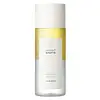What's inside
What's inside
 Key Ingredients
Key Ingredients

 Benefits
Benefits

 Concerns
Concerns

 Ingredients Side-by-side
Ingredients Side-by-side

Citrus Natsudaidai Peel Extract
HumectantWater
Skin ConditioningPolyglyceryl-5 Oleate
EmulsifyingTocopherol
AntioxidantOryza Sativa Bran Oil
EmollientGlycerin
HumectantXanthan Gum
EmulsifyingCaprylyl/Capryl Glucoside
CleansingLauryl Glucoside
CleansingHouttuynia Cordata Extract
Skin ConditioningSalix Nigra Bark Extract
Skin ProtectingGardenia Florida Fruit Extract
Skin ConditioningMaltodextrin
AbsorbentPolyglyceryl-10 Laurate
Skin ConditioningPolyglyceryl-10 Myristate
Skin ConditioningPelargonium Graveolens Flower Oil
MaskingCitrus Aurantium Dulcis Peel Oil
MaskingAmyris Balsamifera Bark Oil
MaskingAnthemis Nobilis Flower Oil
MaskingHelianthus Annuus Seed Oil
EmollientPropanediol
SolventPentylene Glycol
Skin ConditioningCocos Nucifera Fruit Extract
EmollientPinus Sylvestris Leaf Extract
TonicSodium Chloride
MaskingCitric Acid
BufferingCitrus Natsudaidai Peel Extract, Water, Polyglyceryl-5 Oleate, Tocopherol, Oryza Sativa Bran Oil, Glycerin, Xanthan Gum, Caprylyl/Capryl Glucoside, Lauryl Glucoside, Houttuynia Cordata Extract, Salix Nigra Bark Extract, Gardenia Florida Fruit Extract, Maltodextrin, Polyglyceryl-10 Laurate, Polyglyceryl-10 Myristate, Pelargonium Graveolens Flower Oil, Citrus Aurantium Dulcis Peel Oil, Amyris Balsamifera Bark Oil, Anthemis Nobilis Flower Oil, Helianthus Annuus Seed Oil, Propanediol, Pentylene Glycol, Cocos Nucifera Fruit Extract, Pinus Sylvestris Leaf Extract, Sodium Chloride, Citric Acid
Citrus Junos Fruit Water 54%
MaskingCaprylic/Capric Triglyceride
MaskingHelianthus Annuus Seed Oil 10%
EmollientCetyl Ethylhexanoate
EmollientEthylhexyl Palmitate
EmollientCitrus Junos Fruit Water 54%, Caprylic/Capric Triglyceride, Helianthus Annuus Seed Oil 10%, Cetyl Ethylhexanoate, Ethylhexyl Palmitate, Propanediol, Butylene Glycol, Simmondsia Chinensis Seed Oil 1%, Glycine Soja Oil, Bixa Orellana Seed Oil, Tocopherol, 1,2-Hexanediol, Sodium Chloride, Sodium Citrate
Ingredients Explained
These ingredients are found in both products.
Ingredients higher up in an ingredient list are typically present in a larger amount.
Helianthus Annuus Seed Oil is the oil derived from the seeds of a Sunflower. Sunflower seed oil is non-fragrant. It is an emollient, meaning it helps to soften the skin.
Sunflower seed oil contains many fatty acids. The fatty acids found in sunflower seeds include (from highest amount to least): linoleic acid, myristic acid, palmitic acid, stearic acid, arachidic acid, oleic acid, and linolenic acid.
These fatty acids help the skin create ceramides. Ceramides play a role in repairing the skin barrier.
Helianthus Annuus Seed Oil helps moisturize the skin. This in turn helps the skin look more rejuvenated and smoother.
Sunflowers are rich in vitamin E.
Historians believe Indigenous cultures of North America domesticated sunflowers before corn. Thus they relied on sunflower oil for a variety of uses. One such use is moisturizing skin and hair.
Sunflower seed oil may not be fungal acne safe. We recommend speaking with a professional if you have any concerns.
Learn more about Helianthus Annuus Seed OilPropanediol is an all-star ingredient. It softens, hydrates, and smooths the skin.
It’s often used to:
Propanediol is not likely to cause sensitivity and considered safe to use. It is derived from corn or petroleum with a clear color and no scent.
Learn more about PropanediolChances are, you eat sodium chloride every day. Sodium Chloride is also known as table salt.
This ingredient has many purposes in skincare: thickener, emulsifier, and exfoliator.
You'll most likely find this ingredient in cleansers where it is used to create a gel-like texture. As an emulsifier, it also prevents ingredients from separating.
There is much debate on whether this ingredient is comedogenic. The short answer - comedogenic ratings don't tell the whole story. Learn more about comegodenic ratings here.
The concensus about this ingredient causing acne seems to be divided. Research is needed to understand if this ingredient does cause acne.
Scrubs may use salt as the primary exfoliating ingredient.
Learn more about Sodium ChlorideTocopherol (also known as Vitamin E) is a common antioxidant used to help protect the skin from free-radicals and strengthen the skin barrier. It's also fat soluble - this means our skin is great at absorbing it.
Vitamin E also helps keep your natural skin lipids healthy. Your lipid skin barrier naturally consists of lipids, ceramides, and fatty acids. Vitamin E offers extra protection for your skin’s lipid barrier, keeping your skin healthy and nourished.
Another benefit is a bit of UV protection. Vitamin E helps reduce the damage caused by UVB rays. (It should not replace your sunscreen). Combining it with Vitamin C can decrease sunburned cells and hyperpigmentation after UV exposure.
You might have noticed Vitamin E + C often paired together. This is because it is great at stabilizing Vitamin C. Using the two together helps increase the effectiveness of both ingredients.
There are often claims that Vitamin E can reduce/prevent scarring, but these claims haven't been confirmed by scientific research.
Learn more about Tocopherol